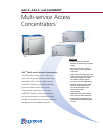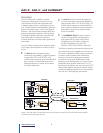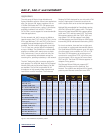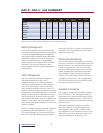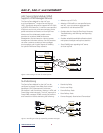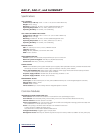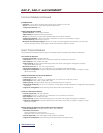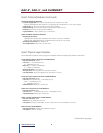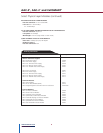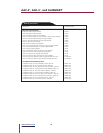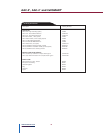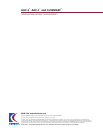
AAC-3
®
, AAC-2
™
, and CellSMART
®
4
www.kentrox.com
800.733.5511
Element Management
The AAC family supports local and remote access
via in-band or out-of-band connections. All products
include an embedded SNMP agent and standard
and enterprise MIBs, compatible with SNMP-based
management systems. You can also Telnet to the
devices via the Ethernet port on the Integrated
System Controller or an in-band ATM/Frame Relay
connection. The native user interface is menu
driven, making port and connection confi guration
quick and easy.
Traffi c Management
You can maximize the utilization of expensive
wide-area bandwidth with AAC traffi c
management features. The Enhanced Shaping
Cell Protocol Module performs traffi c shaping on
a per-VC and per-VP basis, ensuring that traffi c
meets the rates contracted with your carrier. This
prevents cell discard and retransmissions, improving
the overall use of available bandwidth. Connections
exit the module through a weighted-fair queuing
(WFQ) mechanism that ensures each connection
gets scheduled bandwidth, even in the presence of
congestion. The system uses early-packet discard
(EPD) to reduce congestion quickly and to maximize
network utilization.
Other AAC modules increase bandwidth utilization
by reallocating idle CBR bandwidth. The Octal
CES module monitors the CAS voice on/off hook
status and V.35/CBR handshake signals. When a
connection goes idle, the system can terminate the
cell stream so that the bandwidth can be used by
other VBR connections.
Performance Monitoring
AAC systems collect extensive statistics, including
port and cell utilization, cell and packet discard, and
physical line errors. You can view the information
in table or graphical form. With this information
you can monitor network performance, anticipate
growth in bandwidth requirements and trouble-
shoot problems in both the local and wide area
networks. The products also support a full range
of loopbacks including line, local, and payload. In
OC-3/STM-1 networks, you can insert BIP and AIS
errors to test sections of that link.
Standards Compliance
AAC products comply with the relevant standards
of the ATM Forum, ITU-T, Bellcore/Telcordia, the
Frame Relay Forum, and the SMDS Interest Group.
This alleviates compatibility issues in multi-vendor
networks and reduces the risks associated with pro-
prietary solutions.
ATM Forum specifi cation compliance includes
ATM UNI 3.0 and 3.1; Traffi c Management 4.0
with support for CBR, rt-VBR, nrt-VBR and UBR
QoS categories; Circuit Emulation Services 2.0 with
support for structured or unstructured CES; and
Inverse Multiplexing for ATM (IMA) 1.1/1.0
____________________________________________________________________________________________________
____________________________________________________________________________________________________
____________________________________________________________________________________________________
____________________________________________________________________________________________________
____________________________________________________________________________________________________
____________________________________________________________________________________________________
____________________________________________________________________________________________________
ATM UNI • • • • •
ATM DXI • • • •
Frame Relay • • • •
HDLC or PPP • • • •
SMDS DXI • • • •
SMDS SNI • •
Ethernet •
CBR (CES) • • • •
OC-3/STM-1
SM
or MM
V.35, X.21
EIA-530
T3/E3 J2 IMA
T1/E1
T1/E1 HSSI Ethernet
Figure 3: The AAC family supports numerous user and network interfaces.



